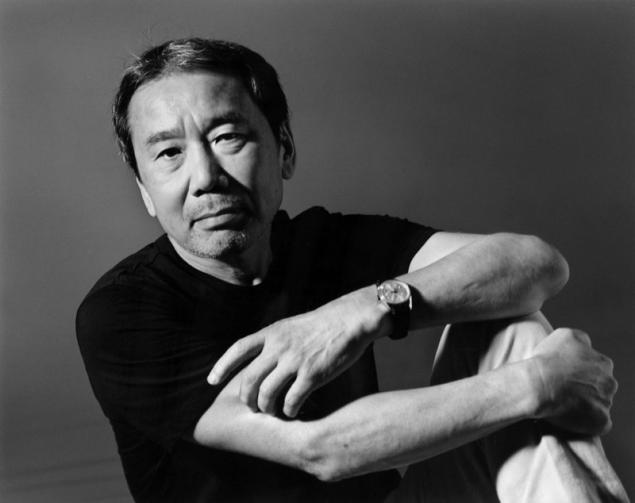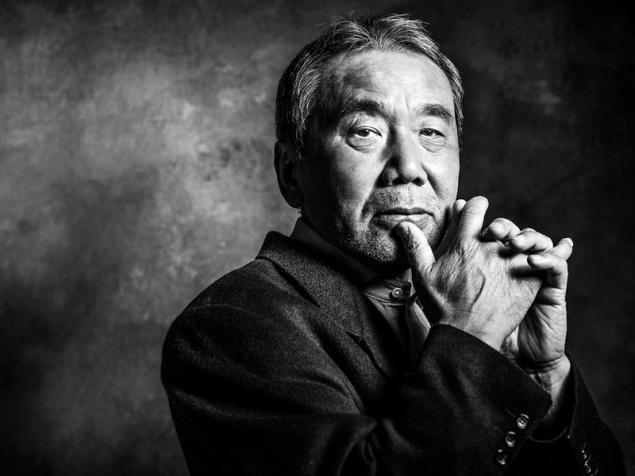314
Wonderland Haruki Murakami: Wostoka and West
What can Haruki Murakami’s novels give to a man of Western culture? What is the uniqueness of his stories? What features of the Japanese worldview are reflected in Murakami’s work and the connection with the incomprehensible, which imbues his novels? Why do we get goosebumps every time a Sheep Man appears? We understand all these issues.
For the Western cultural tradition, the triumph of rationalism and determinism is obvious: everything has its causes and a strict logical explanation. And if it is not found yet, then in the near (or not very) future it will be possible. However, the world of the East is not so, it is more characteristic of the search for subtle, mystical connections between people and events.
What happens when East and West meet? And in what form is this meeting possible? Is everything in the world accessible to our habitual rational cognition, or is there something hidden from the mind, but accessible to the senses, behind the seemingly ordinary events and phenomena? The answer to these questions can be found in creativity. Haruki MurakamiHe conquered both the West and the East.

Man has always sought to know the essence of natural and social phenomena, this desire, in turn, determined his special attitude to the world around him, himself and other people. In Western European culture in modern times, a certain epistemological paradigm has developed, which is called rationalism. According to this paradigm, in order to know the essence of a phenomenon, it is necessary to build a system of causal relationships and relationships between this phenomenon and others.
“Doctor, I have a headache, what should I do?” Well, you know, you need to figure out the cause of the headache, usually the one that preceded the headache in time. Maybe you hit yourself? Did you drink a lot yesterday? It's okay, let's do a CT scan and prescribe the medicine.
According to this principle of the search for the root causes and rational explanation of events and phenomena, not only medicine operates, but also the entire modern Western culture as a whole. But there is another tradition of understanding the relationship between the world and man, which arose in the East, which can be perceived by modern Westerners with both ridicule and trepidation. In any case, she will not leave anyone indifferent.
Evidence of this is the popularity among Western readers of magical realism in the works of the Japanese writer Haruki Murakami, whose works are replete with hidden references to national religious cults and traditions.
The relationship of man with the world in Japanese culture as a whole can be described as irrational, because the logic of reason does not give any explanation. The relations between man and nature, as well as between man and society, are much more subtle and complex and subject to principles unknown to us. If such principles exist, then perhaps they are somehow reflected in fiction and other works of Japanese culture, especially during periods of cultural transformation.
How well can such transformations occur when two cultures interact? Does this lead to an irreparable split in traditional culture and a paradigm shift in culture? What is it like to live in a time of such cultural upheaval, and how do you deal with it?
One of the solutions in the situation of cultural rift and change of cultural paradigms is creativity that can synthesize, restore harmony in the consciousness of both the creator and the audience immersed in his works. How does the rebellion through creativity take place and can it lead to synthesis in difficult times for culture, can the creativity of one person help the whole people and what is the responsibility of the author to him? In order to answer these questions, we turn to the works of Haruki Murakami.

Haruki Murakami is a modern writer born in Japan in 1949. Murakami’s career began with the opening of his bar. Listening to and memorizing the stories of visitors behind the bar, he realized he could write a book. As he says to himself, “I just realized it, that’s it.” After the first success, Murakami left the country for Europe, and then to the United States, where he was even more successful than at home. In Japan, he is considered a Western writer rather than a national writer. This is not surprising, because only the names of the characters and the names of cities remained in Japanese in his novels.
However, for the West, the Land of the Rising Sun does not lose its mystery, despite its westernization in the second half of the twentieth century. Shrouded in mysticism, it is always a mystery to a person of another culture. Why do Murakami’s books attract readers from all over the world? What can be revealed to a person who does not have special knowledge of Japanese culture in the works of Murakami?
The first thing that comes to mind is a special sensory (from the Latin sensus – “perception”). Usually, under sensory is understood a category that describes the direct perception of sensations, the perception of our ego.
Indeed, the way in which Haruki Murakami’s works sometimes describe in detail the perception of music, the beauty of the female body and even the reception of food, is incredibly fascinating to the extent that nothing but “these are peculiarities of national perception” can be said. Of course, these perceptions permeate all the monuments of Japanese culture – from the poetry of Basho, which Erich Fromm so admired, to the films of Akira Kurasawa, for whom finding the right question is much more important than the actions of the characters in the film.
In his work To Have or To Be, E. Fromm uses Basho’s famous hockey to illustrate the model of his relationship with the world, which he calls “to be.” Describing the relationship of man to the flower, he writes:
The poet has no desire to rip it off; he merely “looks carefully” to “see” the flower.
This desire to see and convey the essence of things, albeit in an act of silence, is quite consistent with the spirit of Japanese poetry and prose. The main tasks of the Japanese author include, first of all, the transmission of his feelings, whether it is emotions from the sound of a classic work or contemplation of the landscape outside the window.
To come across such a description in the works of Murakami, you do not need to look for long. In the second chapter of the second book, 1Q84, we see the following text on the front pages:
Whenever "Atlanta Blues" began - the sixth and last on the second side of the album - a friend grabbed Tango for something and demanded that he listen to Bigard's "particularly sensual" solo squeezed between the vocals and Armstrong's trumpet.
- Here! You hear me? He screams like a baby first. Whether from surprise, or from delight, or simply from happiness. And then it turns into a joyful breath - and flies away to no one knows where. Someplace very right we don't know. There! So airy, trembling solo can give only him and no one else. Neither Sidney Yours, nor Jimmy Noon, nor Benny Goodman - none of the world's clarinet virtuososo is capable of such sophisticated sensuality.
However, we can also find a similar description in the works of French culture, for example, in Jean Paul Sartre in Nausea:
A few more seconds and the Negro will sing. It seems inescapable – so predetermined is this music: nothing can interrupt it, nothing that has come from the time in which the world has collapsed; it will cease itself, subjecting the laws. That is why I love this beautiful voice most, not for its fullness, not for its sadness, but for the fact that its appearance was so long prepared by the many notes that died for its birth. And yet I am restless: it takes so little for the record to stop, suddenly the spring breaks, cousin Adolphus capricious. How strange, how touching, that this stronghold is so fragile. Nothing can interrupt it, and anything can destroy it. The last chord is gone. In the gentle silence that has ensued, I feel with all my being that something has happened – something has happened. Silence... In a moment; it was almost excruciating to suddenly become so solid, so sparkling. And the flow of music expanded, grew like a tornado. She filled the hall with her metallic transparency, flattening our miserable time against the walls. I'm inside the music. This is the main change in my movements. The wave of my hand turned into a grand theme, stuck with the accompaniment of the voice of the Negro; I thought I was dancing.
Perhaps it is not only in the peculiarities of the empirical perception of the reality surrounding him. But what, then, is the secret of the special mysticism that permeates the novels of Haruki Murakami? We will try to find the origins of the author’s inspiration in the Japanese culture itself, which has preserved the natural foundations that determine national thinking.
Japan still adheres to its national religion, rooted in a time when man and nature were in harmony. Shintoism is a natural religion, where the divine principle is defined rather vaguely. The word “Kami” in Shinto refers to numerous deities.
So, in the comments to Kojiki, one of the oldest literary texts in Japan, it is said that the Kami are birds, animals, rare natural phenomena that inspire awe in man. The kami are inseparable from the material objects in which they reside; everything is animate. This idea stems from cosmology, in which the world is not created, but is born. The spirits of the ancestors are revered and after death remain in the world first individually, and later merge into the One Kami. The departed person does not break the connection with the living until he has merged into the One Kami.
Death is not the opposite of life, but a part of it.
The artistic world of Haruki Murakami consists of two levels: the ordinary level, or present existence, and the essential level, the Kami. At first glance, it is difficult to talk about such a clear division, but after reading several novels, an interesting structure gradually begins to emerge.
The main characters of the works communicate primarily on an intuitive level, at the level of Kami. We can observe such communication in various works, ranging from “Norwegian Forest” and “Hunting for Sheep”, ending with the last three-volume work “1Q84”, in which the main characters from the school bench retained a certain mystical connection that eventually led them to each other throughout their lives. The same connection can be found in the novel South of the Border, West of the Sun, and even death cannot break it.
The social and the natural in Shinto are in unity. The natural core is represented in such principles of constructing reality as “Kegare” and “Tsumi”. Kagare is the pollution or defilement that the body acquires when it comes into contact with nothingness. It penetrates into the world of the living, transforming and destroying it. Tsumi is interpreted more broadly as something collective, rather than individual.
“Tsumi can occur as a result of incestuous relationships” or under the influence of the forces of nature: “...ethical sin is mixed with material evil, since all violations lead to a disorder of the cosmological order and bring with them pollution.”
The real world of Murakami’s heroes gradually, as Kegare accumulates, and as a result of some event, warps and turns into chaos, in which the forces of evil (Tsumi) already dominate. In such a world, everything is possible. Usually, the break point in his works is social events, such as World War II or the student uprisings in Japan in 1968-1970, in which the author himself was directly involved.
But there are internal and external ways to straighten the world, Murakami argues: righteousness and duty in deeds and thoughts. In the novel “Kafka on the beach” one of the main motives is the search for “stone from the entrance”. The hero has to perform a rite of desecration in order to take a stone and close the passage to the other world, restoring order and balance in the world.
Shinto is a religion of life and fertility, so the attitude to sexual intimacy in Japanese culture has no negative connotation, which explains the abundance of explicit scenes in Murakami’s novels. The hero realizes the necessity of the rite through the guides between the worlds, which can appear before him in different ways: Colonel Sanders, a man in a sheep costume or a little teenage girl. But physical intimacy does not save from evil, it only makes it clear to the reader that the world is thrown into chaos, that is, marks Tsumi.

The works of Haruki Murakami are filled with references to cultural monuments of European civilization, the author prescribes them directly and explicitly, takes as a basis mythological plots of antiquity, as well as European philosophy and literature, but references to national myths and symbols, due to which there is a game with meanings and a dialogue of cultures, require deciphering.
Murakami as an author is focused primarily on the Western audience, in his works there is recognition of brands, music, literature and cinema, that is, the space of his novels does not differ from the European one, but structurally they reveal a completely different cosmology and logic, alien to the European consciousness. There is a harmonious synthesis of the two cultures, but it is difficult to call it symmetrical.
Faina Ranevskaya: The habit of living
Good George Bernard will wean you off whining and laziness
Such synthesis is especially important in times of crisis: both for each person (because it helps him to find true foundations, values and meanings, demonstrates to a person that everything is not yet destroyed), and for culture as a whole. This is the soteriological role of art in human life and society.
P.S. And remember, just by changing your consciousness – together we change the world!
Source: monocler.ru/strana-chudes-haruki-murakami/
For the Western cultural tradition, the triumph of rationalism and determinism is obvious: everything has its causes and a strict logical explanation. And if it is not found yet, then in the near (or not very) future it will be possible. However, the world of the East is not so, it is more characteristic of the search for subtle, mystical connections between people and events.
What happens when East and West meet? And in what form is this meeting possible? Is everything in the world accessible to our habitual rational cognition, or is there something hidden from the mind, but accessible to the senses, behind the seemingly ordinary events and phenomena? The answer to these questions can be found in creativity. Haruki MurakamiHe conquered both the West and the East.

Man has always sought to know the essence of natural and social phenomena, this desire, in turn, determined his special attitude to the world around him, himself and other people. In Western European culture in modern times, a certain epistemological paradigm has developed, which is called rationalism. According to this paradigm, in order to know the essence of a phenomenon, it is necessary to build a system of causal relationships and relationships between this phenomenon and others.
“Doctor, I have a headache, what should I do?” Well, you know, you need to figure out the cause of the headache, usually the one that preceded the headache in time. Maybe you hit yourself? Did you drink a lot yesterday? It's okay, let's do a CT scan and prescribe the medicine.
According to this principle of the search for the root causes and rational explanation of events and phenomena, not only medicine operates, but also the entire modern Western culture as a whole. But there is another tradition of understanding the relationship between the world and man, which arose in the East, which can be perceived by modern Westerners with both ridicule and trepidation. In any case, she will not leave anyone indifferent.
Evidence of this is the popularity among Western readers of magical realism in the works of the Japanese writer Haruki Murakami, whose works are replete with hidden references to national religious cults and traditions.
The relationship of man with the world in Japanese culture as a whole can be described as irrational, because the logic of reason does not give any explanation. The relations between man and nature, as well as between man and society, are much more subtle and complex and subject to principles unknown to us. If such principles exist, then perhaps they are somehow reflected in fiction and other works of Japanese culture, especially during periods of cultural transformation.
How well can such transformations occur when two cultures interact? Does this lead to an irreparable split in traditional culture and a paradigm shift in culture? What is it like to live in a time of such cultural upheaval, and how do you deal with it?
One of the solutions in the situation of cultural rift and change of cultural paradigms is creativity that can synthesize, restore harmony in the consciousness of both the creator and the audience immersed in his works. How does the rebellion through creativity take place and can it lead to synthesis in difficult times for culture, can the creativity of one person help the whole people and what is the responsibility of the author to him? In order to answer these questions, we turn to the works of Haruki Murakami.

Haruki Murakami is a modern writer born in Japan in 1949. Murakami’s career began with the opening of his bar. Listening to and memorizing the stories of visitors behind the bar, he realized he could write a book. As he says to himself, “I just realized it, that’s it.” After the first success, Murakami left the country for Europe, and then to the United States, where he was even more successful than at home. In Japan, he is considered a Western writer rather than a national writer. This is not surprising, because only the names of the characters and the names of cities remained in Japanese in his novels.
However, for the West, the Land of the Rising Sun does not lose its mystery, despite its westernization in the second half of the twentieth century. Shrouded in mysticism, it is always a mystery to a person of another culture. Why do Murakami’s books attract readers from all over the world? What can be revealed to a person who does not have special knowledge of Japanese culture in the works of Murakami?
The first thing that comes to mind is a special sensory (from the Latin sensus – “perception”). Usually, under sensory is understood a category that describes the direct perception of sensations, the perception of our ego.
Indeed, the way in which Haruki Murakami’s works sometimes describe in detail the perception of music, the beauty of the female body and even the reception of food, is incredibly fascinating to the extent that nothing but “these are peculiarities of national perception” can be said. Of course, these perceptions permeate all the monuments of Japanese culture – from the poetry of Basho, which Erich Fromm so admired, to the films of Akira Kurasawa, for whom finding the right question is much more important than the actions of the characters in the film.
In his work To Have or To Be, E. Fromm uses Basho’s famous hockey to illustrate the model of his relationship with the world, which he calls “to be.” Describing the relationship of man to the flower, he writes:
The poet has no desire to rip it off; he merely “looks carefully” to “see” the flower.
This desire to see and convey the essence of things, albeit in an act of silence, is quite consistent with the spirit of Japanese poetry and prose. The main tasks of the Japanese author include, first of all, the transmission of his feelings, whether it is emotions from the sound of a classic work or contemplation of the landscape outside the window.
To come across such a description in the works of Murakami, you do not need to look for long. In the second chapter of the second book, 1Q84, we see the following text on the front pages:
Whenever "Atlanta Blues" began - the sixth and last on the second side of the album - a friend grabbed Tango for something and demanded that he listen to Bigard's "particularly sensual" solo squeezed between the vocals and Armstrong's trumpet.
- Here! You hear me? He screams like a baby first. Whether from surprise, or from delight, or simply from happiness. And then it turns into a joyful breath - and flies away to no one knows where. Someplace very right we don't know. There! So airy, trembling solo can give only him and no one else. Neither Sidney Yours, nor Jimmy Noon, nor Benny Goodman - none of the world's clarinet virtuososo is capable of such sophisticated sensuality.
However, we can also find a similar description in the works of French culture, for example, in Jean Paul Sartre in Nausea:
A few more seconds and the Negro will sing. It seems inescapable – so predetermined is this music: nothing can interrupt it, nothing that has come from the time in which the world has collapsed; it will cease itself, subjecting the laws. That is why I love this beautiful voice most, not for its fullness, not for its sadness, but for the fact that its appearance was so long prepared by the many notes that died for its birth. And yet I am restless: it takes so little for the record to stop, suddenly the spring breaks, cousin Adolphus capricious. How strange, how touching, that this stronghold is so fragile. Nothing can interrupt it, and anything can destroy it. The last chord is gone. In the gentle silence that has ensued, I feel with all my being that something has happened – something has happened. Silence... In a moment; it was almost excruciating to suddenly become so solid, so sparkling. And the flow of music expanded, grew like a tornado. She filled the hall with her metallic transparency, flattening our miserable time against the walls. I'm inside the music. This is the main change in my movements. The wave of my hand turned into a grand theme, stuck with the accompaniment of the voice of the Negro; I thought I was dancing.
Perhaps it is not only in the peculiarities of the empirical perception of the reality surrounding him. But what, then, is the secret of the special mysticism that permeates the novels of Haruki Murakami? We will try to find the origins of the author’s inspiration in the Japanese culture itself, which has preserved the natural foundations that determine national thinking.
Japan still adheres to its national religion, rooted in a time when man and nature were in harmony. Shintoism is a natural religion, where the divine principle is defined rather vaguely. The word “Kami” in Shinto refers to numerous deities.
So, in the comments to Kojiki, one of the oldest literary texts in Japan, it is said that the Kami are birds, animals, rare natural phenomena that inspire awe in man. The kami are inseparable from the material objects in which they reside; everything is animate. This idea stems from cosmology, in which the world is not created, but is born. The spirits of the ancestors are revered and after death remain in the world first individually, and later merge into the One Kami. The departed person does not break the connection with the living until he has merged into the One Kami.
Death is not the opposite of life, but a part of it.
The artistic world of Haruki Murakami consists of two levels: the ordinary level, or present existence, and the essential level, the Kami. At first glance, it is difficult to talk about such a clear division, but after reading several novels, an interesting structure gradually begins to emerge.
The main characters of the works communicate primarily on an intuitive level, at the level of Kami. We can observe such communication in various works, ranging from “Norwegian Forest” and “Hunting for Sheep”, ending with the last three-volume work “1Q84”, in which the main characters from the school bench retained a certain mystical connection that eventually led them to each other throughout their lives. The same connection can be found in the novel South of the Border, West of the Sun, and even death cannot break it.
The social and the natural in Shinto are in unity. The natural core is represented in such principles of constructing reality as “Kegare” and “Tsumi”. Kagare is the pollution or defilement that the body acquires when it comes into contact with nothingness. It penetrates into the world of the living, transforming and destroying it. Tsumi is interpreted more broadly as something collective, rather than individual.
“Tsumi can occur as a result of incestuous relationships” or under the influence of the forces of nature: “...ethical sin is mixed with material evil, since all violations lead to a disorder of the cosmological order and bring with them pollution.”
The real world of Murakami’s heroes gradually, as Kegare accumulates, and as a result of some event, warps and turns into chaos, in which the forces of evil (Tsumi) already dominate. In such a world, everything is possible. Usually, the break point in his works is social events, such as World War II or the student uprisings in Japan in 1968-1970, in which the author himself was directly involved.
But there are internal and external ways to straighten the world, Murakami argues: righteousness and duty in deeds and thoughts. In the novel “Kafka on the beach” one of the main motives is the search for “stone from the entrance”. The hero has to perform a rite of desecration in order to take a stone and close the passage to the other world, restoring order and balance in the world.
Shinto is a religion of life and fertility, so the attitude to sexual intimacy in Japanese culture has no negative connotation, which explains the abundance of explicit scenes in Murakami’s novels. The hero realizes the necessity of the rite through the guides between the worlds, which can appear before him in different ways: Colonel Sanders, a man in a sheep costume or a little teenage girl. But physical intimacy does not save from evil, it only makes it clear to the reader that the world is thrown into chaos, that is, marks Tsumi.

The works of Haruki Murakami are filled with references to cultural monuments of European civilization, the author prescribes them directly and explicitly, takes as a basis mythological plots of antiquity, as well as European philosophy and literature, but references to national myths and symbols, due to which there is a game with meanings and a dialogue of cultures, require deciphering.
Murakami as an author is focused primarily on the Western audience, in his works there is recognition of brands, music, literature and cinema, that is, the space of his novels does not differ from the European one, but structurally they reveal a completely different cosmology and logic, alien to the European consciousness. There is a harmonious synthesis of the two cultures, but it is difficult to call it symmetrical.
Faina Ranevskaya: The habit of living
Good George Bernard will wean you off whining and laziness
Such synthesis is especially important in times of crisis: both for each person (because it helps him to find true foundations, values and meanings, demonstrates to a person that everything is not yet destroyed), and for culture as a whole. This is the soteriological role of art in human life and society.
P.S. And remember, just by changing your consciousness – together we change the world!
Source: monocler.ru/strana-chudes-haruki-murakami/
The widest muscle of the back and large circular muscle: points of tension and pain relief
Nissan: prototype car with the power plant on bioethanol























